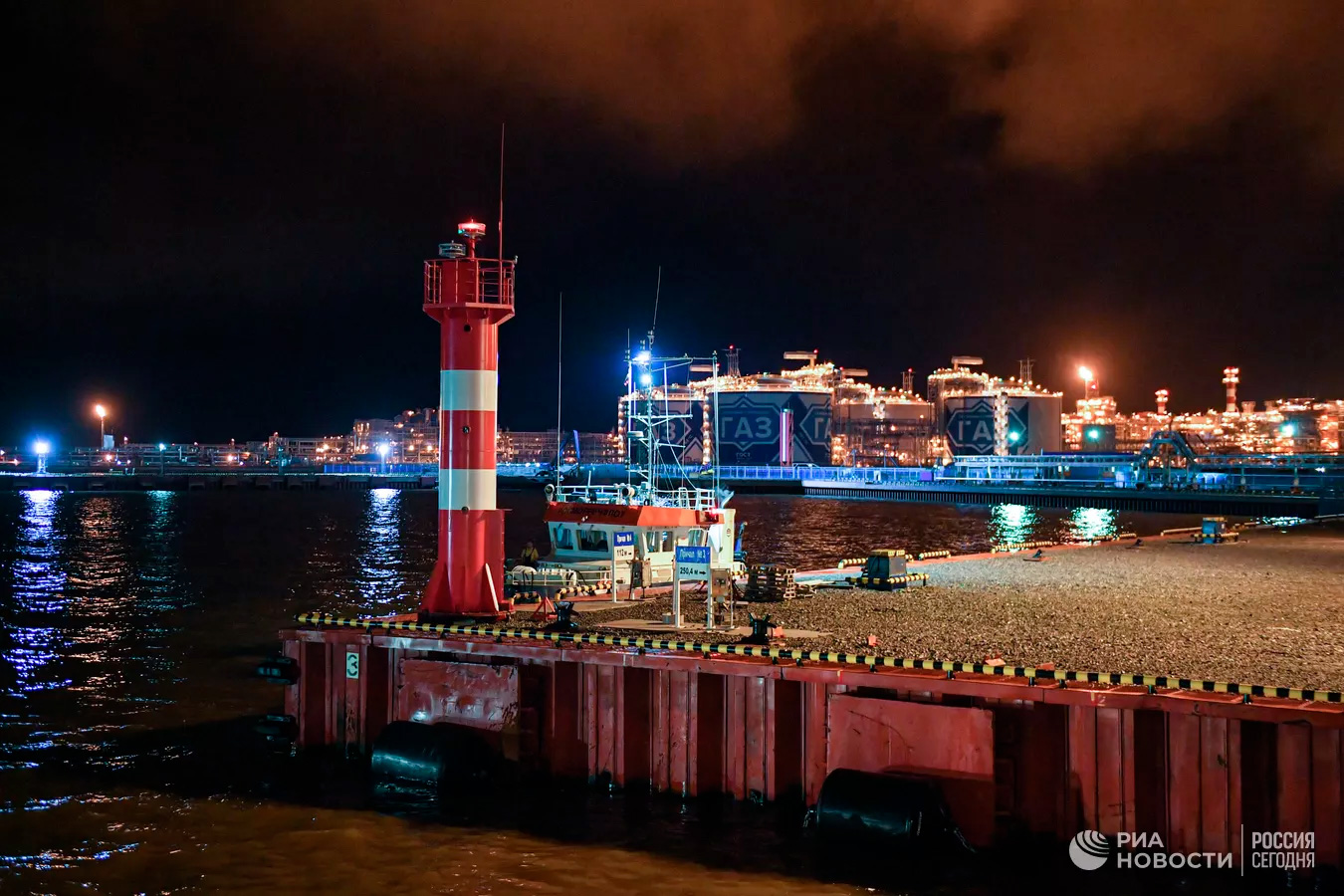New trends in the logistics component of Russia’s economy were among the principal discussions of the 7th Eastern Economic Forum (EEF) held on September 5–8, 2022 in Vladivostok. Even Vladimir Putin dwelled specifically on this matter in his plenary address when he said, “Notably, despite the attempts of external pressure, the total cargo of Russian seaports has decreased only slightly over the seven months of this year; it has remained at the same level as the year earlier, which is about 482 million tons of cargo. Last year, there were 483 million, so the figure is practically the same. At the same time, Far Eastern ports are witnessing a real logistics boom. The volume of cargo transshipment and container handling is such that specialists are working 24/7 to handle the workload. In a word, no matter how much someone might like to isolate Russia, it is impossible to do so, just as we always say. It is enough just to look at the map. We will use natural competitive advantages to build up our further transport capabilities, expand the road and railway network, build new access roads to sea terminals and expand their capacity.”
Indeed, experts and entrepreneurs who assembled at the EEF noted a feverish demand for carrying freight via Russian transportation infrastructure, which was not so obvious half a year ago, in the first days into Russia’s special military operation in Ukraine, when many “analysts” abroad as well as in Russia predicted something similar to an “economic blockade” of Russia and a dramatic drop of the population’s purchasing power. Today, Russia’s foreign trade obviously did not come to a stop, while it did significantly alter. An important shift is emerging here: trade is moving away from Europe, rather heading towards partners in Asia. Logistics has been transforming alongside this shift. This process may be labeled a “freight pivot to the East.”
It became possible because the West’s expectations of Russia’s trade ties being cut failed: Asian partners (China, India and ASEAN in particular) continued to actively trade with Russia. The Russian market was expected to crash, but the Russian economy persevered instead—when the ruble began to grow stronger, it turned out that the population’s demand for foreign commodities remained high as well. In some instances (for example, in auction purchases of used Japanese cars by individuals), the ruble’s favorable exchange rate pushed the demand higher than the pre-pandemic figures.
Consequently, even though Western logistics giants (such as Maersk and Hapag-Lloyd) withdrew from the Russian market in March–April 2022, resulting in several months of significant dips in freight shipping via Russian ports and roads, traffic has begun to rebound rapidly. However, its unique feature is that the transportation infrastructure of Russia’s eastern part—notably, the ports of the Far East and Russian Railways’ “eastern range” (the Trans-Siberian railway and the Baikal-Amur Railway)—now account for a significant chunk of freight carriage. Currently, this infrastructure is operating at 100% of its capacity, which means it cannot meet the demand for increasing carriage volume in its current shape.
Problems are plenty: from the carrying capacity of roads down to personnel shortages. The good news is that the problems are recognized at the highest level, and there is a prospect of large-scale investment coming into infrastructure development in the near future. Previously, the state and business might not have had sufficient incentives to invest into the eastern regions, and their mindsets and interests largely remained deeply Euro-centric. Yet, the current situation gets them to change their attitude. With logistics chains shifting eastward, the process prompts decisions to develop these regions, and socioeconomic development will inevitably follow. If the current trends persist, the Far East will finally stop being a “far” away region.
Below, we offer a brief overview of the current state and prospects of the most important elements of the transportation infrastructure in Russia’s East.
Ports
Russian ports at various ends of the country found themselves in drastically different circumstances. The contrasts are particularly stark in container transshipping. While Europe-oriented Baltic ports faced a dramatic drop of container traffic, down to 44% at the end of the first six months of 2022, those at the Black Sea and the Sea of Azov, gearing both towards Europe and the Middle East and Asia, saw a drop of mere 9%. Arctic ports demonstrated a 19% growth, while ports at the Caspian Sea saw growth of 53%. The figures for the Far East are not quite so impressive, standing at 4%, but we should take into account, first, that this is an increase as compared to the record-setting post-pandemic figures of 2021 (quite high in themselves), and, second, that statistics for the first six months is not indicative, because March–April 2022 saw a veritable collapse following the breakdown of more traditional logistics routes. Year-end statistics will be far more telling, and experts assembled at the EEF agreed that a major increase will be recorded.
Currently, virtually every port of the Far East’s mainland is operating at full capacity: Vostochny, Nakhodka, Vladivostok, Zarubino, Posieta, Vanino, Sovetskaya Gavan. Some ports are showing an increase in container shipping, others are demonstrating tremendous demand for coal transshipping, but the trend is the same everywhere. New routes are launched amid the increased demand: in May 2022, Russia launched its first direct maritime route between Vladivostok and Vietnam’s ports (Vladivostok – Haiphong – Ho Chi Minh City – Ningbo, China – Vladivostok). Several companies at once opened direct lines to India. Plans involve direct lines to Indonesia, Malaysia, and Bangladesh. Despite some claims of Korean and Japanese businesses that they are withdrawing from the Russian market, trade with these countries continues as well.
Currently, an entire range of projects for building new ports is in development. The project of a port in Sukhodol Bay (Shkotovo District, Primorsky Territory, 80 km away from Vladivostok) looks particularly promising. The port is positioned as a hub for loose goods (grain, fertilizers), but there is a chance it will mostly transship coal, as it is one of the Russian commodities in particularly high demand on the Asian markets. Construction started on the Elga port in the Chumikan settlement on the coast of the Sea of Okhotsk in the Khabarovsk Territory. This port is built solely for transshipping coal from the Elga deposit in Yakutia.
However, a far more important task is to modernize the existing ports. Each of them is operating at full capacity. Given the current boom in logistics, vessels have to wait for weeks to be unloaded. Besides, there is a huge environmental and social concern since coal is transshipped right in port cities’ downtowns (Vladivostok, Nakhodka, Vanino). Of all the ports in the Far East, only Vostochny, which was built back in the Soviet times, meets present-day requirements for container terminals. Furthermore, there is still no modern grain terminal: long-standing plans to build it in the Troitsa Bay in the Khasansky District of the Primorsky Territory remained nothing but ink on paper.
This situation requires strategic decisions to be made at the highest level. Essentially, this entails the construction of new ports with cutting-edge infrastructure within the next 20–30 years, removing them from large cities and eventually overcoming the inertia of the “wild 1990s”, which is still present in the port facilities.
Railways
Ports should be developed together with modernizing railways. Sometimes, the situation in this area is aptly called “a rail noose around the neck of investment in port infrastructure.” Unlike ports, Russian railways have a single owner with a monopoly on modernizing the “eastern range,” which is done not so quickly as the consignors would like.
The “eastern range” is plagued with problems and “bottle-necks” that do much to slow down the flow of exported freight, acting as a constraint on developing the Far East. At the end of 2021, the “eastern range” operated at 100% of its capacity, with its carrying capacity totaling 144 million tons. Current infrastructure limitations produce an acute shortage of carrying and effective capacities (various estimates put it within the range of 90–140 million tons, and that does not account for further re-orientation of freight flow from the West to the East). Due to a sharp uptick in demand for container shipments in global logistics since 2021, individual types of freight (primarily coal) are delivered to ports in quantities below producers’ possible output.
Modernization of the “eastern range” is slated to be completed in 2035, supposedly bringing its annual carrying capacity to 305 million tons of all types of freight. It covers the current needs, but it is likely to become insufficient in the coming thirteen years. Ultimately, there is a stable demand for new railway lines to “relieve” the Trans-Siberian Railway and the Baikal-Amur Railway.
There are interesting developments in this area as well. For instance, there are plans to build a railway from the Elga coal deposit specifically for the port currently built in the Uda Gulf, and the Khabarovsk Territory’s authorities claim that it will be a private rail, which will be constructed quite quickly.
Amid the current logistics boom, the Makhalino – Hunchun rail line, built back in the 1990s with private financing, was finally launched at the Russia–China border in the Primorsky Territory. In 2021, about three million tons of various commodities were shipped via the Makhalino border crossing point. At year-end 2022, it is expected to demonstrate a significant growth. In particular, the first train carrying Russian LNG traveled down this line in September 2022. The train delivered 21 tanks of LNG to China’s Hunchun; each tank contained about 300 tons.
The third rail line that could be built as a concession with private financing may be a railway going from Yakutia to the Dzhalinda village in the Amur Region on the border with China. An MoU between the authorities of the two Russian regions was signed at the EEF. Subsequently, there will be construction of the Dzhalinda–Mohe railway bridge over the Amur. According to the Amur Region Governor Vasily Orlov, appropriate arrangements with Chinese authorities are already in place.
The first railway bridge over the Amur, “Nizhneleninskoye (Jewish Autonomous Region) – Tongjiang” is already built, but it cannot become fully operational owing to the problems with equipping border-crossing points.
Border crossing points
Russian border crossing points at the Chinese border remains a “pain in the neck” for cross-border logistics. They are mostly derelict and have primitive equipment. The contrast with Chinese border crossing points is particularly stark—not only do they have technical functions, but they also serve as “the country’s showcase”; it is no accident that they have been dubbed国门 (“the country’s gate”) in Chinese.
The situation on the Russian side is exacerbated by the fact that most facilities are privately owned or constitute municipal property, which is the legacy of the 1990s when they were established with next to no participation of the state to provide for a torrential flow of trade with China. Border crossings are facilities of national importance, and such a situation is certainly nonsensical, which is clear both to federal and local authorities.
To set things right, the Federal Agency for State Border Infrastructure Development (Rosgranitsa) was established in 2007. It undertook to overhaul principal border crossing points on the Russian-Chinese border for the APEC-2012 Summit in Vladivostok. However, the agency proved to be criminally ineffective, and it was dissolved in 2016. At that time, construction of several border crossing points had been launched but not completed.
The functions of Rosgranitsa were transferred to another agency, the Directorate for Constructing and Operating State Border Facilities (Rosgranstroy) subordinated to the Ministry of Transport. However, the Ministry of Transport’s efforts to make an inventory of assets inherited from Rosgranitsa have been taking too long, and this process needs to be radically accelerated. Development of the border infrastructure in the Far East could have seemed a marginal issue just a few years ago, but it is now assuming a strategic national significance.
It is especially so since demand for freight carriage via land-based border crossing points is huge. For instance, imports of automotive equipment via Kraskino have grown by 150%. Freight turnover at the Tury Rog – Mishan border-crossing point, which used to be considered marginal and operating under capacity, has grown by 50%. Freight is now transported via the Blagoveshchensk – Heihe vehicular bridge across the Amur. The bridge was put into operation in June 2022, and its border-crossing point is so far equipped under the so-called “provisional plan.” Traffic across Russia’s land border with China will increase further when China lifts strict quarantine requirements for imported goods as there will be headway in combating the coronavirus pandemic.
Pipelines
Finally, pipeline transportation also needs to be developed. Russia is ready to sell more oil and gas to China (especially amid many problems with the scrappy European buyers), while China is ready to buy more, but the existing pipelines do not have sufficient capacities.
For several days on end in July 2022, Russia set daily records of gas deliveries to China via the Power of Siberia pipeline, even though the pipeline is yet to reach its design capacity (38 billion cubic meters a year). It evidences the great demand for Russian gas in China, who sees it as a cornerstone of its “green strategy” intended to reduce dependence on coal in power generation.
In February 2022, an agreement was signed on gas deliveries from the shelf near Sakhalin Island (Power of Siberia 3, 10 billion cubic meters of gas annually) in addition to the Power of Siberia. The project of another new gas pipeline running through Mongolia is now discussed at an accelerated pace—it is often called Power of Siberia 2, although the official name is Soyuz – Vostok.
At the Eastern Economic Forum, President Putin said that all aspects of delivering gas to China via that route have been agreed upon: We “even agreed with our Chinese friends on price parameters, which is never so easy. Our Chinese friends are tough bargainers. Naturally, they proceed from their national interests in any deal, which is the only way to go. But they are stable and reliable partners, and the market is enormous.”
The new project will have the capacity of 50 billion cubic meters of fuel a year. Unlike Power of Siberia 1 fed from deposits in Eastern Siberia, this pipeline will be fed from Yamal deposits, whose gas was previously delivered to Europe only. In other words, the pipeline industry demonstrates an appreciable shift from the West to the East, much like the container transshipping industry.
Still, this is not enough. Out of 200 billion cubic meters of gas Russia exports, all three pipelines will transport a little under 100 billion cubic meters once they have reached their design capacity. This is still less than Europe purchased a year ago (130 billion cubic meters of gas). Supposing that Europe stops buying Russian gas completely (which is honestly hard to believe), there will still be significant volumes that could potentially be exported, bringing the needed funds into Russia. Russia cannot rapidly redirect these volumes to other market as it takes five or six years in the best-case scenario. Given that demand for Russian gas on the Chinese market is growing, Russia needs to consider additional pipeline capacities, to the south of the Far East at the very least (where gas infrastructure is mostly lacking). Should need arise, such a step will allow for a rapid increase in either cross-border pipeline sales or LNG sales.
1. The situation with Russian oil deliveries to Asian markets is rather similar. Already in June 2021, Chinese imports of crude oil grew by 55% as compared to the previous year. It put Russia in the first place among China’s oil suppliers (ahead of Saudi Arabia). The Eastern Siberia – Pacific Ocean (ESPO) oil pipeline, the main route for oil deliveries to China, has a fairly limited capacity; Russian oil travels to China partially via the Kozmino port with a capacity of 50 million tons and partially via the Skovorodino – Mohe branch line with the capacity of 80 million tons. As a result, Russia is forced to rely on the pipelines running through Kazakhstan or pin its hopes on transporting oil from the Baltic ports using large tankers, such as Aframax class or VLCC (Very Large Crude Carrier). The problem, however, is that this mode of delivery takes a long time (two months instead of two weeks), so more tankers will be required. Additionally, such large tankers cannot dock at Baltic ports, which means that oil first needs to be transported on Aframaxes to other ports and then transshipped into VLCC.
If the Northern Sea Route opens for large-capacity tankers and if there are more ice-class tankers, the prospects will be somewhat different, but this is still a matter for the future, although this future may not be too far away, judging by the first output of the Zvezda shipbuilding complex at Bolshoy Kamen in Primorye.
Current infrastructure restrictions do not allow Russia to fully meet the demand for trade on the part of Asian partners (primarily that of China). At the same time, the certainly good news is that redirecting trade flows eastward will make it possible to offset the problems with Western markets. Additionally, provided that there are large-scale investments in logistics infrastructure, such a redirect will be conducive to the socioeconomic development of Russia’s East.







